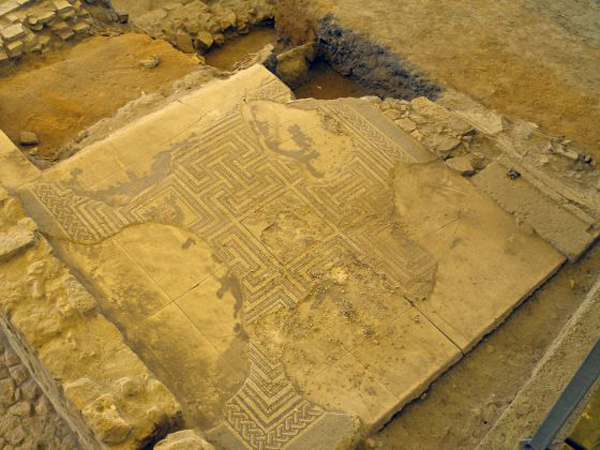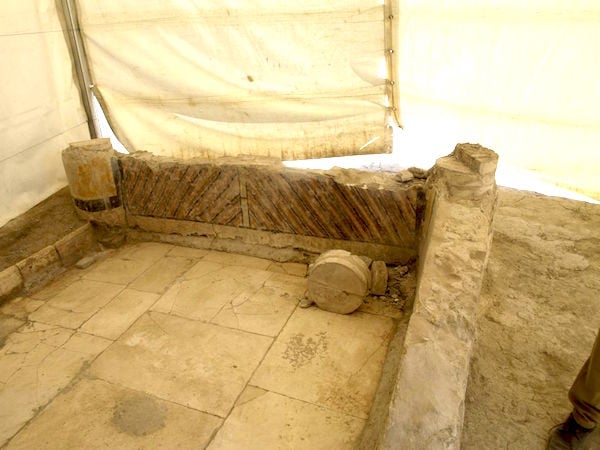Art World
Vandal Destroys Roman and Muslim Relics in Archaeological Site in Southern Spain
A Spanish official compared the incident to recent ISIS attacks on heritage sites.

Photo via: El País
A Spanish official compared the incident to recent ISIS attacks on heritage sites.

Lorena Muñoz-Alonso


Image of the Roman column destroyed in the attack
Photo via: El País
Police in Écija, Spain, are investigating a vandalism attack on Plaza de Armas del Álcazar, a hugely important archaeological site located in the southern province of Seville, El País reports.
A priceless Roman mosaic and a column from a Roman house have been severely damaged, as well as an ancient Muslim tomb, whose human remains have been scattered all over the site.
“Police already have a suspect, as CCTV cameras recorded an individual entering the site just before 1am on Tuesday,” Richardo Gil Toresano, mayor of Écija, told El País. “His aim was just to cause damage, he did not steal anything,” he explained.
And damage he did. The Roman mosaic has been destroyed beyond repair, according to the archaeologist, Sergio García-Dils. The piece, which features the image of an elder man and a child in its central part, is a rare specimen.

Image of the mosaic destroyed in the attack
Photo via: El País
“As far as we know, only four mosaics of similar qualities remain in the world: one in Luxemburg, two in Italy, and this one in Écija,” García-Dils lamented.
“This is not vandalism, this is heritage terrorism,” Rafael Benítez, a delegate for tourism development, declared. “It’s the same as what the Islamic State is doing in Syria and Iraq. A criminal act. Whoever’s done it, knew what he was doing and where he had to go, because he went straight to specific elements, and destroyed the most valuable part of a 16-square-meter mosaic,” he added.
The site, which is still being excavated, only opened to the public three weeks ago. It spans an area of 4,000 square meters in the center of the city of Écija. The local council has announced that a formal investigation is already underway and that the site will remain closed until further notice.
Plaza de Armas del Álcazar contains remains dating from the 8th century BC to the 18th century AD. Last year, the team of twenty-strong archaeologists employed by the site discovered a large Roman building. Its 2.5-meter-tall walls are preserved in good condition, and are covered with stucco and figurative paintings depicting flowers, leaves, and cheetah skins.
For more coverage on recent attacks on important archeological sites see:
ISIS Bulldozes 3,000-Year-Old Major Assyrian Site in Nimrud, Iraq
ISIS Militants Storm Museum and Smash 3,000 Year Old Assyrian Sculptures on Video